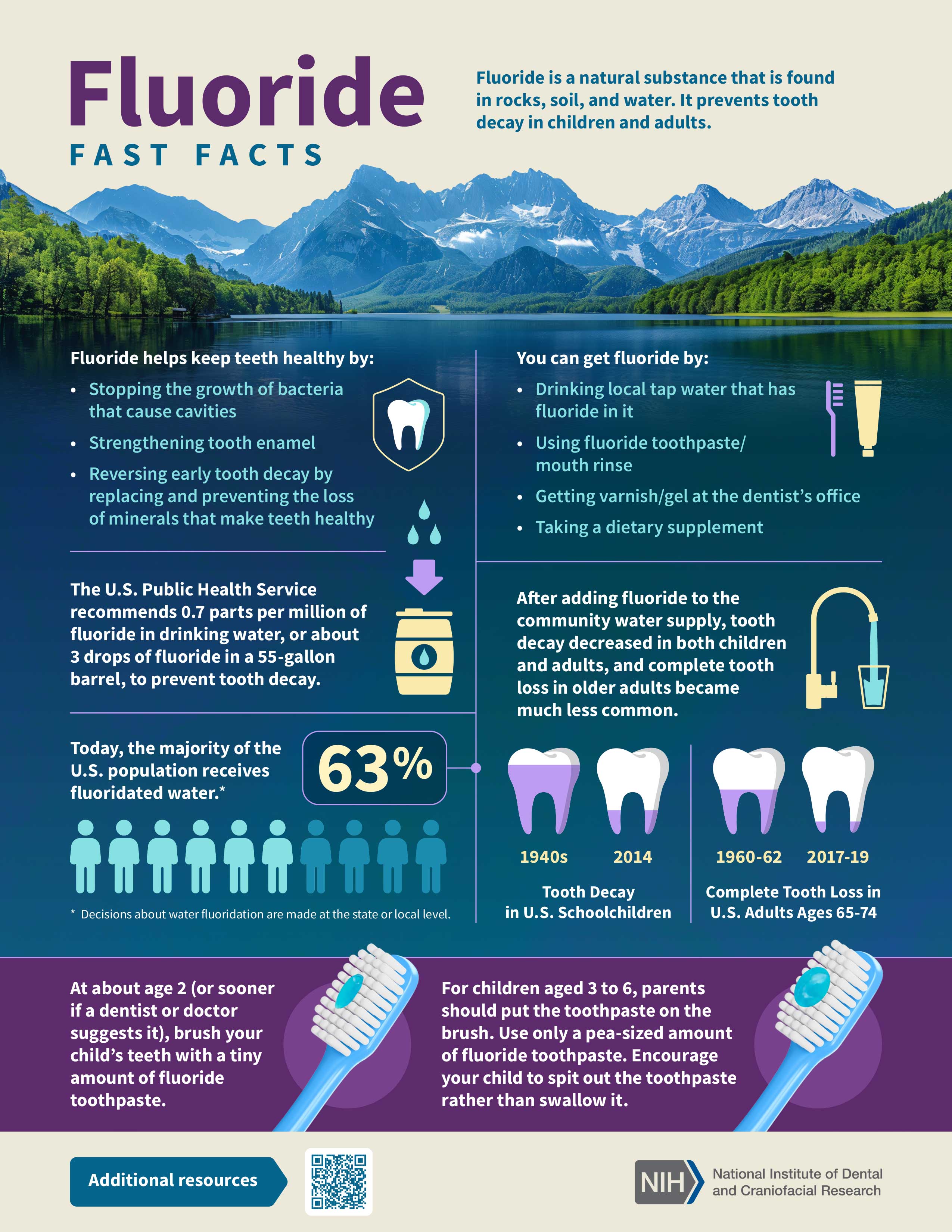Read Ask the Expert: Why is fluoride good for dental health? with NIDCR Deputy Director Jennifer Webster-Cyriaque, D.D.S., Ph.D., who answers common questions about why fluoride is good for dental health, how it works to prevent tooth decay, and what we know about the health effects of excessive fluoride levels.
Community Water Fluoridation
In the early 1900s, scientists began investigating the impact of local water on oral health. By the 1940s, it was clear that people whose drinking water naturally contained higher levels of fluoride had fewer cavities.
February 14, 2024.
In 1945, Grand Rapids, Michigan, became the first city to add fluoride to the public water supply. The results were astounding. After just 10 years, the rate of tooth decay among Grand Rapids children dropped more than 60%. The finding involved nearly 30,000 schoolchildren, and its message was clear: Adding tiny amounts of fluoride to public drinking water had the potential to make tooth decay a preventable disease for the first time in history.
We know today that fluoride can prevent, stop, and reverse the early stages of tooth decay. If left untreated, tooth decay can lead to cavities, pain, tooth loss, missed days of school or work, the need for dental procedures, and potentially deadly infections elsewhere in the body.
Prior to community water fluoridation, tooth decay was widespread and severe. Missing and decaying teeth were the most common reasons for World War II recruits to be rejected from military service. After the introduction of water fluoridation, tooth decay was dramatically reduced in both children and adults. Other factors such as improved access to care, dietary changes, and enhanced oral hygiene also likely contributed to this trend.
Since 1962, the U.S. Public Health Service has recommended adding a small amount of fluoride to local drinking water to help prevent tooth decay. Today, around 63% of the U.S. population receives fluoridated water. The standard fluoride level for community water fluoridation is less than one part per million (0.7 milligrams per liter (mg/L)). A big advantage of water fluoridation is that anyone, regardless of income, age, access to dental care, or other social circumstances, can benefit from its cavity-preventing abilities at home, school, work, or anywhere public water is available. Because of this, community water fluoridation helps reduce health disparities between people who have access to regular dental care and those who don’t.
Community water fluoridation is recommended by nearly all public health, medical, and dental organizations, including the American Academy of Pediatrics, U.S. Public Health Service, World Health Organization, and the American Dental Association. Fluoridation of drinking water was named one of the Ten Great Public Health Achievements in the 20th century by the U.S. Centers for Disease Control and Prevention (CDC).
In 2024, the National Toxicology Program released a report about the potential effects of fluoride on brain development in children. The report concluded that there is a possibility that routinely drinking water high in fluoride (above 1.5 mg/L, more than double the recommended level) might be linked to a lower intelligence quotient (IQ) in children. The study did not examine children or adults in the United States and does not claim that water fluoridation at 0.7 mg/L has any effect on IQ. Future research will provide a clearer picture of the health effects of fluoride at various levels.
February 2025

